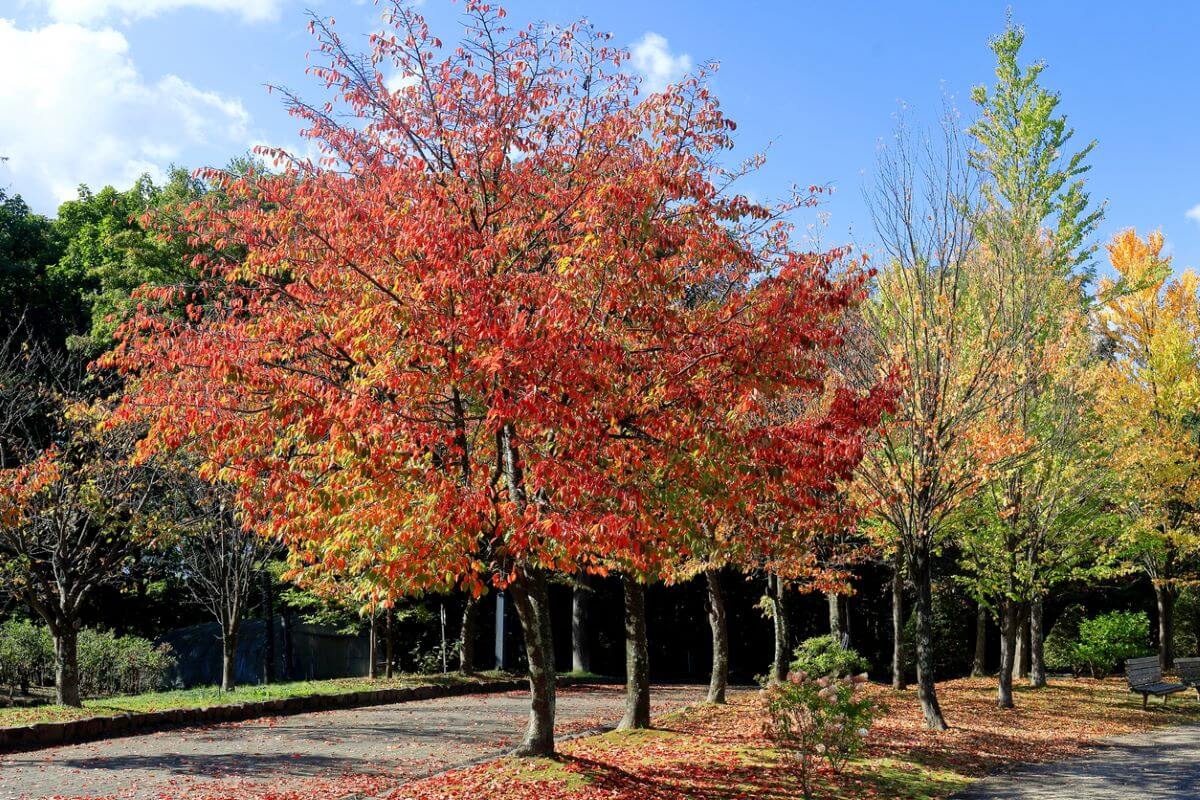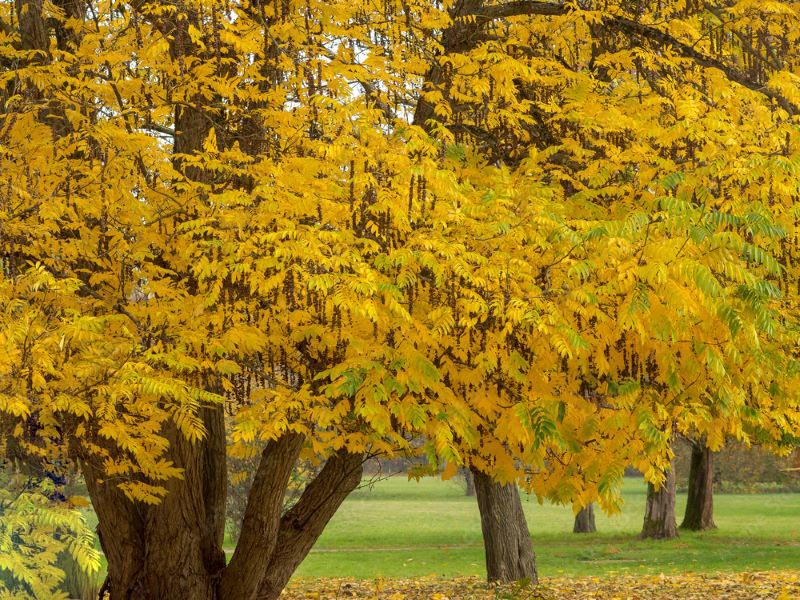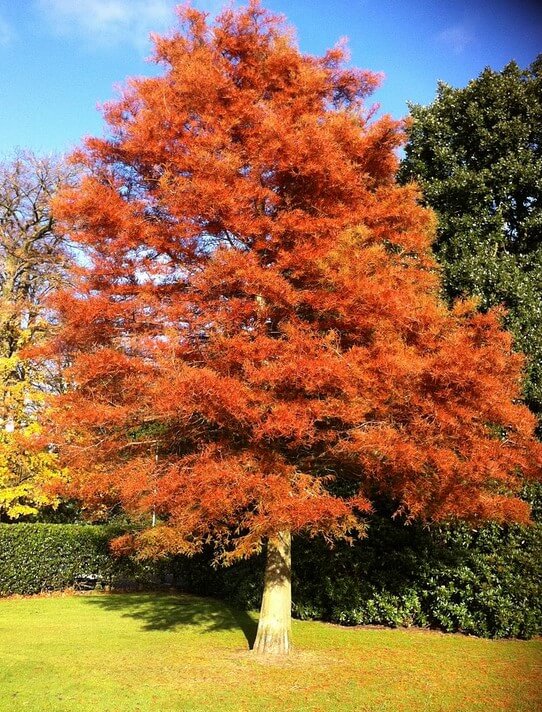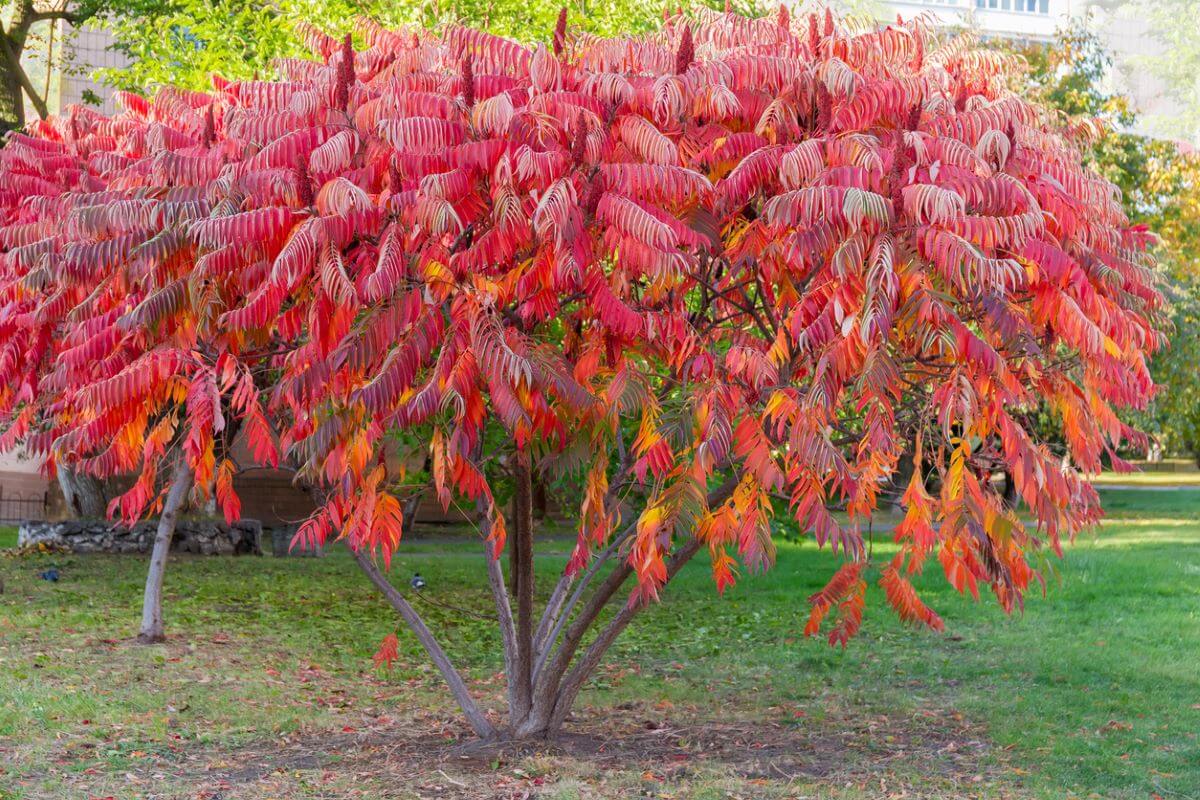From September to mid-November, many trees and certain shrubs show us all the colors. Intensity, nuances, reflections change depending on the species, but also depending on the position of the sun. In a small garden, it is of course impossible to recreate a palette as varied as in a forest or a large park. Sometimes it is necessary to make a strict selection and only choose one and only one tree, due to lack of space!
Also, there is no room for error: if you have a crush on foliage that is warmer or more fiery than another, also ask yourself a few questions: height, size, soil, exposure, speed of growth, flowering. ..?
The Tulip Tree: golden

This majestic, imposing tree, with leaves appearing truncated at the end, is of course intended for large gardens. Rapidly growing, it reaches around 6 meters at 10 years old. Aside from its stunning fall foliage and elegant silhouette, its tulip-shaped flowers are another plus for it. They only appear in adulthood.
- It thrives in all types of soil, preferably a little humid and in a sunny location.
- Plant it in November or February-March, alone.
The Parrotia: orange and green

The charm of this small tree is mainly manifested in October-early November, when the colors still waver between green and orange-red. The vegetation somewhat resembles that of the beech and extends from the base of the trunk, forming a mass of greenery almost wider than it is tall. In winter, the barks are extremely decorative.
- Rustic and without any particular requirements, it is easy to adopt.
- Avoid soils that are too calcareous and place it in the sun to obtain beautiful autumn coloring.
Taxodium: red with golden highlights

You may know it better as bald cypress. This conifer, like the metasequoia, loses its leaves in winter. But before the fall, what brilliance! Its ample and slender silhouette requires a clear situation. It reaches around 5 meters at 12 years old.
Give him deep, rich soil. Plant it, for example, on the edge of a body of water because it greatly appreciates humidity. It tolerates intermittently flooded land perfectly. Its roots are equipped for this: they form protuberances (pneumatophores) which emerge from the ground and supply them with air (old subjects only).
Gingko: golden yellow

The tree with forty crowns is the brightest of autumn foliage. The beautiful adult subjects reach 15 to 20 meters in height. Preferably plant “males”: their silhouette is more slender than that of females and especially the latter bear fruit with an unpleasant odor. This tree grows slowly between 3 and 4 meters (at 10 years).
- You can accommodate it in a medium-sized garden located in an urban area: its resistance to pollution is exceptional.
- Plant preferably in March, in deep soil and in a sunny area, alone or in association with a group of trees and shrubs.
- To keep away from the house.
Prunus serrulata: bright orange

All seasons honor it: magnificent spring flowering, shiny red bark in winter and superb autumn coloring of the leaves. Many advantages, but we can criticize it for a certain banality.
- Depending on the variety, the silhouettes are sometimes very different but are all suitable for small gardens.
- Plant in November, in ordinary soil and in a sunny location. Avoid locations near buildings, as creeping roots can cause damage.
Japanese Maple: purple red

For small gardens: it does not exceed 1.50 to 3 meters in height for an identical spreading surface.
- Plant it in siliceous and humus-rich, non-calcareous soil. If necessary add heather soil and peat. Partly shaded location preferred.
- The best varieties: Acer palmatum Dissectum, Acer japonicum Aconitifolium with cut foliage.
- To showcase on a terrace, in a large container or on the edge of the paving. In a rockery, on an embankment or on the edge of a pond. In association with heather plants.
Pterocarya: golden blond

This tree, similar to the walnut, requires a lot of space because it grows quickly: at 10 years old, its highest branches already reach 6 meters. Remember its originality, its elegance and its autumnal splendor: golden foliage and fruiting bodies formed of long hanging spikes (30 to 45 cm) dark brown.
- An isolated situation is preferable. Deep soil, rather humid, sunny location. Very rustic.
- Plant preferably in November.
The Metasequoia: golden brown

If you like originality, the color of this tree is completely unique and difficult to describe. In addition, here is one of the rare deciduous conifers. Its regular and balanced silhouette, conical and slender, can be admired from quite a distance.
It likes cool and humid soils, sunny or partially shaded situations. Place it near a pond or isolated on a lawn. Rapidly growing, the metasequoia should be installed in a large garden, in an open area. It reaches between 15 and 18 meters in 20 years. Stay safe.
Rhustyphina: orange

Virginia sumac (staghorn sumac) is one of the rare shrubs with spectacular fall coloring. It does not exceed 4 to 5 meters in height and is an excellent choice for a small garden.
- Easy to grow, it thrives in all types of soil and in full sun. One problem: this shrub often forms suckers.
- Its pure and “Japanese” silhouette is highlighted on a terrace or in a front garden. In winter, the velvety branches remain decorative.
Liquidambar: red, yellow and crimson

Its autumn coloring is comparable to that of Virginia creepers. The growth, quite slow in the first years (around 7-8 meters at 20 years), and the slender silhouette are assets for small gardens.
- The best growing conditions are deep, fresh, non-calcareous soil and a sunny location. Water in summer to stimulate vegetation.
- Plant the subjects in a plug or container in November or March. The recovery is sometimes delicate, the subjects offer a more natural fit.

